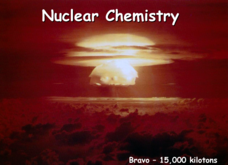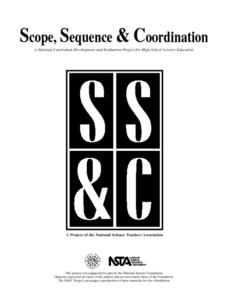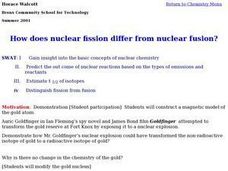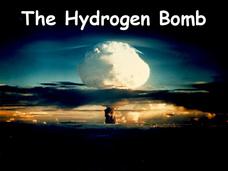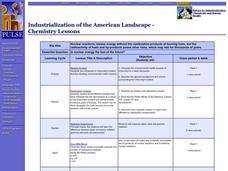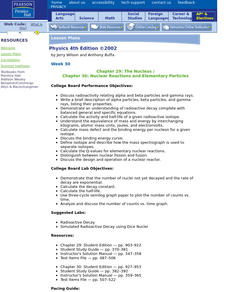Curated OER
Nuclear Reactions Answers to Questions
Written to accompany another slide show available through our site, the information here gives the history and trivia connected to nuclear decay research. This slide show concentrates on the definitions and theory of nuclear fission and...
Curated OER
Nuclear Reactions: Fission and Fusion
These nicely designed slides work through the processes of nucelar fission and fusion with very clear, labeled diagrams that almost act as animations when you progress from slide to slide. Facts behind the process are summarized well....
Curated OER
Nuclear Chemistry Worksheet
In this nuclear chemistry worksheet, students solve nine problems about half life, positron emission, nuclear fission and nuclear fusion.
Science Geek
Nuclear Chemistry
Which bichemicals wash up on shore? Nucleotides! Presentation covers alpha, beta, and gamma radiation. Includes a comparison of fission versus fusion. Presentation is the second in a five-part series.
Curated OER
Nuclear Chemistry Project
Radiation has numerous real-world applications, some of which are relatively safe while others can be extremely hazardous. In this nuclear chemistry project, young scientists choose a practical use of nuclear reactions to...
Curated OER
WS 6.1 Nuclear Particles and Reactions
In this nuclear chemistry instructional activity, students define radioactivity and the types of nuclear reactions. They label nuclear reactions with one of five types of reactions including fusion, fission, induced, natural decay or...
Curated OER
Radioactivity, Time, and Age
Four activities demonstrate the chain reaction of nuclear fission to your physical science fans: falling dominoes, snapping mouse traps, throwing paper wads, and igniting a series of matches. They perform additional...
Curated OER
How does Nuclear Fission differ from Nuclear Fusion?
Students examine concepts of nuclear chemistry. They compare and contrast the topics of nuclear fission and nuclear fision. They predict the outcome of reactions based on the types of emissions and reactants.
Curated OER
Regents High School Examination PHYSICAL SETTING CHEMISTRY 2007
The University of the State of New York has designed a series of exams to be given to high schoolers. This chemistry exam is one of the most comprehensive and well-written that you will ever find. It consists of 84 questions in a variety...
Curated OER
Nuclear Energy
In this energy worksheet, students explore nuclear fission reactions and the amount of energy produced by fission. Students explore electricity generated in nuclear power plants. This worksheet has 3 fill in the blank, 10 short answer,...
Curated OER
Mining Uranium and Nuclear Reactor
In this mining worksheet, learners fill in the blanks to paragraphs about mining uranium and a nuclear reactor. Students fill in the blanks for 17 sentences.
Texas State Energy Conservation Office
Investigation: Splitting Atoms
In a simple activity, physical scientists model nuclear fission using a droplet of oil. This can be used alone in a unit on different types of energy, or as part of the energy conservation unit produced by the Texas State Energy...
American Institute of Physics
Women and the Manhattan Project
The Manhattan Project was a massive undertaking involving multiple sites and thousands of scientists and technicians. To gain an understanding of the women who participated in the project, groups select an oral history of a woman...
Curated OER
Nuclear Power Gets A Boost
Middle schoolers examine nuclear plants and how they use fission reactions to generate electricity, compare fusion reactions to fission, and read about technology that may soon allow fusion to become practical for producing nuclear power...
Science Geek
The Hydrogen Bomb
Recycled Russian nuclear weapons provide 10 percent of the nuclear energy that the United States uses. The short presentation discusses the Teller-Ulam device. It provides a diagram of the parts as well as a description of the four...
American Institute of Physics
African Americans and the Manhattan Project
A lesson about the Manhattan Project will explode young physicists' understanding of the racial attitudes in the United States during and after World war II. Groups select an African American scientist or technician that worked on the...
Curated OER
Energy: Nuclear Power
In this energy and nuclear power worksheet, learners, with a partner, discuss what thirteen energy terms mean and match those same terms to their definitions in the second activity.
Curated OER
Half-life Worksheet
In this half-life worksheet, students determine how long it takes for a 100g sample of AU-198 to decay to 6.25g. Then they determine the half-life of a radioactive isotope if a 500.0g sample decays to 62.5g in 24.3 hours. Students also...
Curated OER
Will the Lights Go Out?
Students diagram nuclear power plant, describe process for generating electrical power, discuss nuclear disasters in the 20th century, and draw conclusion about value of nuclear power for the future.
Curated OER
Industrialization of the American Landscape
High schoolers explore the Chernobyl incident and the resulting environmental health impacts. They explore three different isotopes that were released into the atmosphere. Through inquiry, students determine the difference between...
Curated OER
Applied Science - Physics Post-Lab
Students investigate energy. In this Physics lesson, students explore different sources of energy: heat, nuclear, and chemical. Students sing an electricity song.
Curated OER
Energy from Atoms
In this energy from atoms worksheet, students match 10 sentences to given terms related to nuclear energy, electricity, fission, and nuclear reactions. They also answer 3 questions about nuclear waste and atomic reactions.
Curated OER
Poster Presentations
Middle schoolers create visual displays explaining how nuclear power is used to produce electricity. They create a display board that shows the chain reaction, the fission process, and a schematic diagram of the reactor.
Curated OER
The Nucleus / Nuclear Reactions and Elementary Particles
Students describe how radioactivity relates to alpha and beta particles. Using their properties, they write a descriptive paper about the gamma rays and alpha and beta particles. They calculate q-values and the half-life of a given...





